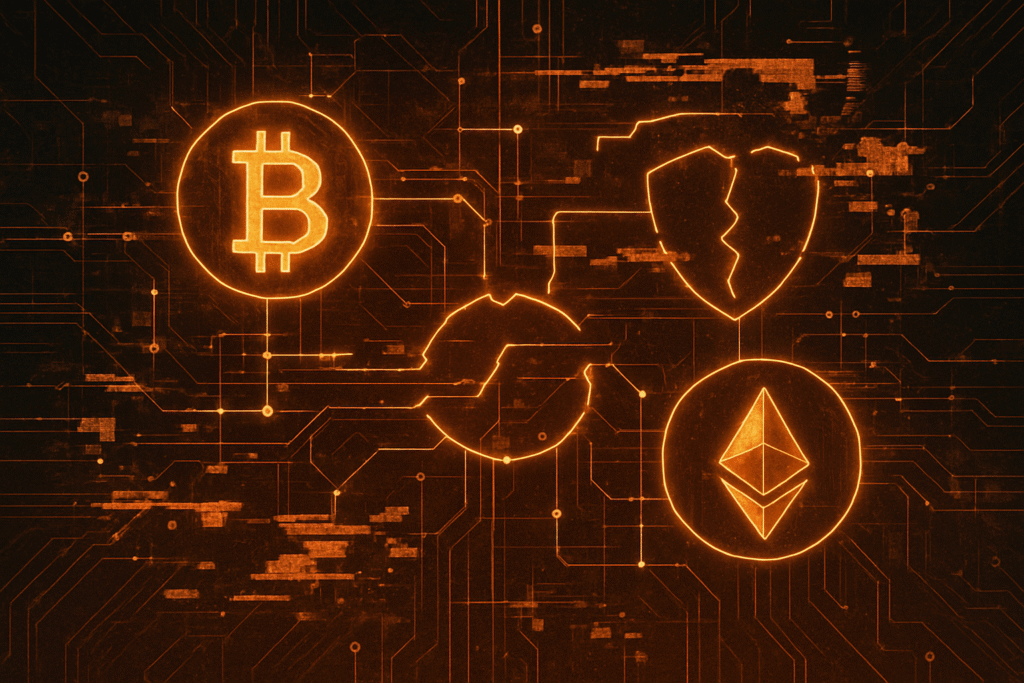
The digital frontier of cryptocurrency, while promising innovation and financial freedom, remains a battleground against evolving cyber threats. Among the most insidious adversaries to emerge in recent years is the Luma Infostealer, also known as LummaC or LummaC2. First identified in August 2022, this potent Malware-as-a-Service (MaaS) has steadily carved out a niche in the cybercrime underworld, offering sophisticated data theft capabilities to malicious actors. Its continuous presence and adaptability underscore a critical, ongoing challenge for the crypto ecosystem, reminding users that the promise of decentralized finance comes hand-in-hand with the paramount need for robust digital security.
Luma Infostealer's emergence did not trigger an immediate, singular market crash, but rather contributed to the pervasive undercurrent of cybersecurity anxiety within the crypto community. Its significance lies in its direct targeting of digital assets and the personal information crucial for accessing them. For an industry built on trust and technological integrity, the sustained threat of infostealers like Luma erodes confidence, necessitates heightened vigilance, and demands a collective strengthening of security postures across all levels of engagement.
Market Impact and Price Action
Unlike a sudden hack that might cause a specific token's price to plummet, the impact of malware like Luma Infostealer is more insidious and systemic. Its pervasive nature contributes to a general climate of caution and heightened risk perception rather than isolated price movements. While there haven't been specific, attributable price drops in major cryptocurrencies directly linked to Luma's activities, the continuous threat of such infostealers can subtly influence market sentiment. Investors, particularly those new to the space, may become more hesitant to engage fully, leading to potential dampening effects on overall trading volume and liquidity.
The ongoing battle against information stealers can divert resources within companies and projects towards enhancing security infrastructure, which, while beneficial in the long run, can impact short-term development focus. The broader crypto market's resilience against such threats is often tested by the cumulative effect of numerous cyber incidents, rather than a single malware family. This environment necessitates a constant re-evaluation of security practices, potentially driving up demand for secure hardware wallets and audited smart contracts, thereby indirectly influencing the market dynamics of these related sectors. The presence of sophisticated MaaS offerings like Luma serves as a constant reminder of the "silent tax" that cybercrime imposes on the digital economy, impacting investor confidence and potentially slowing broader adoption if not adequately addressed.
Community and Ecosystem Response
The crypto community's response to threats like the Luma Infostealer has been characterized by a dual focus: raising awareness and promoting preventative measures. Social media platforms, including Crypto Twitter and various Reddit forums, frequently buzz with discussions about new malware strains, phishing attempts, and best practices for securing digital assets. Security researchers and blockchain analytics firms play a crucial role in dissecting these threats, sharing intelligence, and issuing warnings, which are then amplified by crypto influencers and thought leaders. These figures often emphasize the importance of self-custody, the use of hardware wallets, and vigilance against suspicious links and downloads.
The emergence of such threats also galvanizes developers within the broader Web3 ecosystem. DeFi protocols and NFT projects are increasingly prioritizing security audits, bug bounty programs, and user education initiatives to safeguard their communities. There's a growing recognition that the security of the end-user is as critical as the security of the underlying blockchain technology. This collective response aims to build a more resilient ecosystem, fostering a culture where security is not an afterthought but an integral part of every user's interaction with decentralized applications and digital assets.
What's Next for Crypto
The persistent threat of advanced infostealers like Luma signals an ongoing arms race in the digital security landscape. In the short term, we can anticipate a continued focus on bolstering endpoint security for crypto users. This includes more sophisticated antivirus solutions, enhanced browser security features, and a greater emphasis on operating system hardening. For projects and platforms, the strategic consideration will be to integrate more robust multi-factor authentication (MFA) methods, move beyond simple password-based systems, and possibly explore decentralized identity solutions that reduce reliance on single points of failure.
In the long term, the implications for the crypto market point towards a maturation of security standards. Potential catalysts include regulatory bodies pushing for stricter cybersecurity compliance for exchanges and service providers, which could indirectly benefit individual users through trickle-down security enhancements. We might also see the widespread adoption of innovative security technologies, such as secure enclaves, zero-knowledge proofs for authentication, or even hardware-level protections integrated into consumer devices designed specifically for crypto interactions. Investors will increasingly scrutinize the security posture of projects, making it a key differentiator. The most likely scenario is a continuous evolution of both attack vectors and defense mechanisms, demanding perpetual vigilance and adaptation from all participants in the crypto economy.
Bottom Line
The Luma Infostealer serves as a stark reminder that cybersecurity is not merely an IT concern but a fundamental pillar for the integrity and widespread adoption of cryptocurrency. For crypto investors and enthusiasts, the key takeaways are clear:
- Vigilance is paramount: Always be suspicious of unsolicited emails, messages, or downloads. Verify sources before clicking links or installing software.
- Strong security practices: Use unique, complex passwords for all accounts, enabled with hardware-based 2FA whenever possible.
- Hardware wallets: For significant holdings, hardware wallets (e.g., Ledger, Trezor) offer the best defense against software-based infostealers by keeping private keys offline.
- Software hygiene: Keep operating systems, browsers, and all crypto-related applications updated to their latest versions to patch known vulnerabilities.
- Regular backups: Securely back up wallet seed phrases and essential data, storing them offline in a safe location.
The long-term significance of this ongoing battle against malware like Luma is profound. It underscores that for crypto to truly achieve mainstream adoption, it must not only offer technological innovation but also guarantee an exceptionally secure environment for users. The continuous evolution of threats necessitates an equally dynamic and proactive approach to defense. The future of crypto adoption hinges on the industry's ability to educate its users, develop more resilient infrastructure, and collectively raise the bar for digital security.
This article is for informational purposes only and does not constitute financial or investment advice. Cryptocurrency investments carry significant risk.





